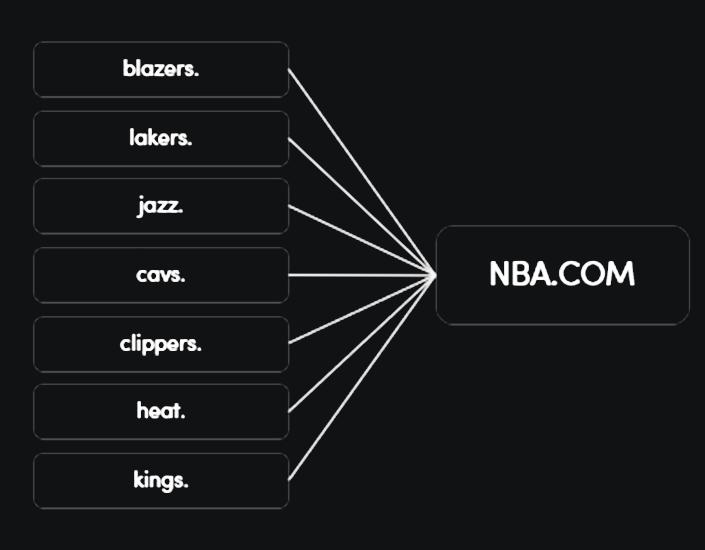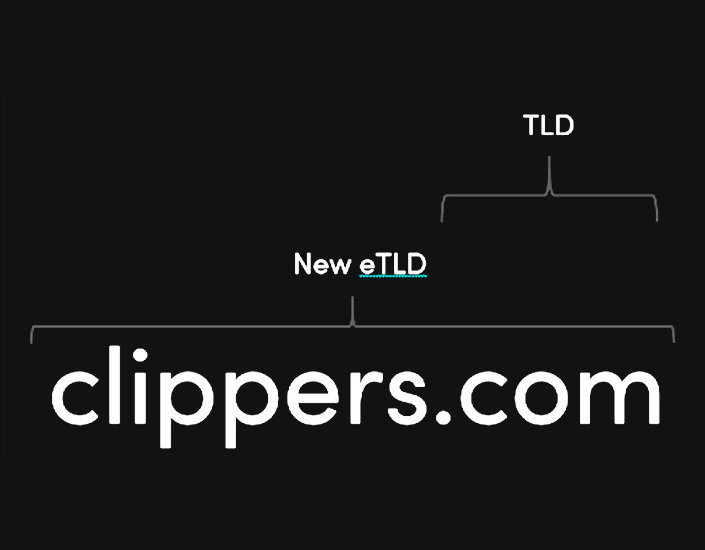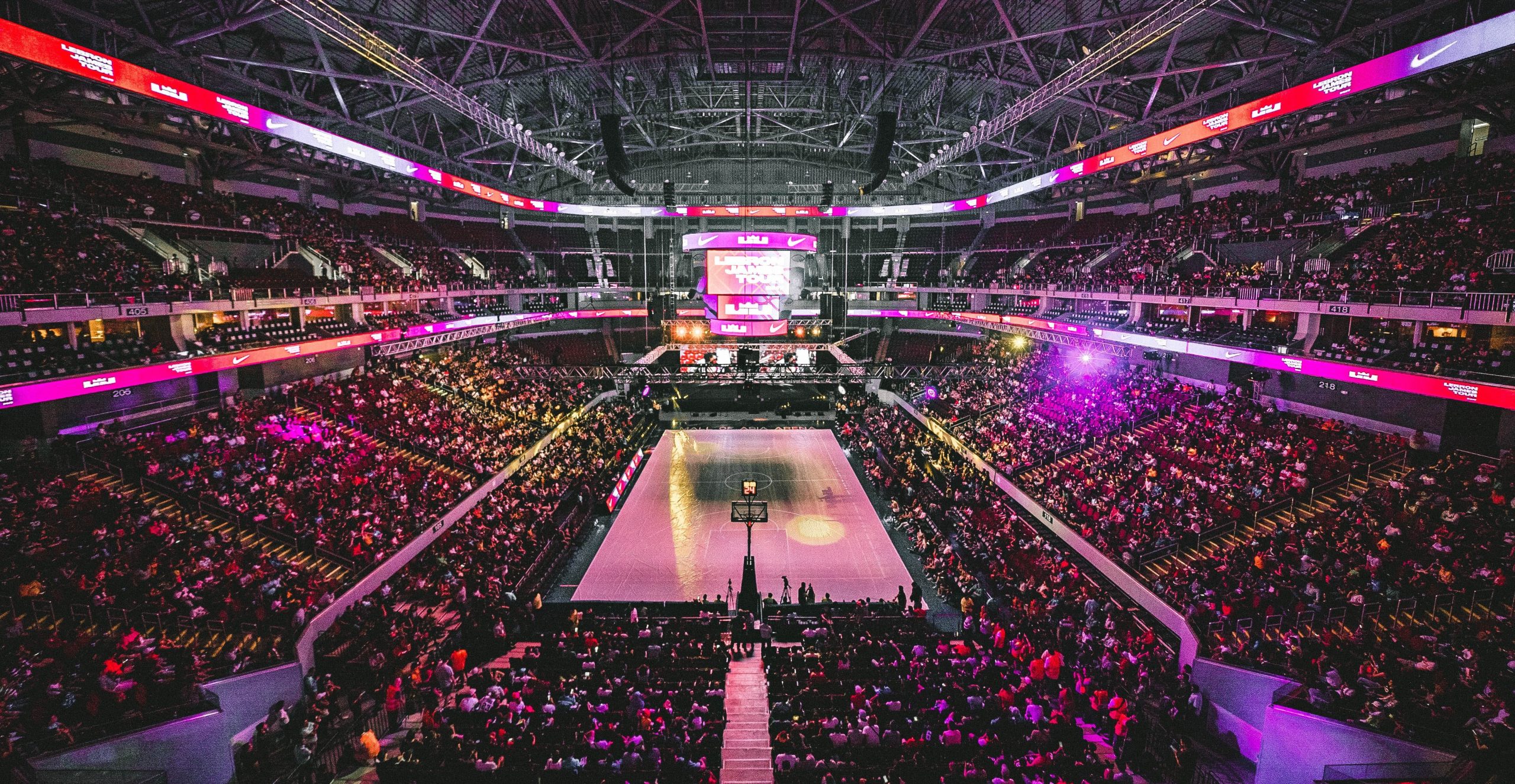- Keith
- March 31, 2021
- 9:16 am
- No Comments
There are three major issues stemming from the Apple iOS 14 update. For major sports leagues to adapt, we have laid out the Big 3 reasons this will fundamentally impact how each team advertises and how to solve for them.
The Big 3: Domain Structure, Third-Party Ticket Companies and Events
- Issue 1: Major Sports Leagues have an inverted domain structure compared to what Facebook typically supports. Most eCommerce sites have subdomain then domain (myWidget.Shopify.com), while major sports utilize the opposite (nhl.com/mapleleafs).
- Issue 2: Checkout experiences for Major League Sports eCommerce is mostly run by third-party eCommerce companies. Ticketmaster and AXS are the main players and they have yet to build a technology stack that teams can control. The domain structure issue would be easy to solve by changing to subdomains, (like Shopify does), or allowing API access for onsite root domain builds.
- Issue 3: Ticket engines are gaining control over the most impactful event prioritization purchase and whole leagues are having to balance the needs of 30 or more teams with the rest of the events. Allowing on-page checkout experiences could benefit everyone in the funnel—teams and consumers.
ISSUE 1
Since the announcement of iOS 14, Facebook has been scrambling to figure out a tracking solution. The main concern is Facebook’s conversion reporting. With this iOS 14 change, Facebook will not be able to take credit for as many conversions as it has in the past.
This can potentially degrade the advertisers perceived ad performance—resulting in less revenue for Facebook. In order to prevent the loss of revenue, Facebook has required these advertisers to evolve.
The biggest change impacting sports leagues around the country is domain verification. Many leagues use a single eTLD (Effective Top-Level Domain), allowing only one entity to validate the domain. What is a TLD, eTLD, or eTLD+1 you might ask? The TLD is the .com or .org portion of most sites. The ‘site’ or eTLD (e=effective) is the name plus the TLD, like nba.com. The eTLD+1 is the subdomain plus the site (eTLD) like clippers.nba.com.

Most of the Major Sports Leagues use a system of directories, instead of subdomains to create sites for the various franchises like nba.com/lakers. This contrasts how other eCommerce platforms work. Most eCommerce sites use an eTLD+1 (subdomain), like mywidget.shopify.com for which Facebook designed a support system. If the leagues in question were to switch to either root domains or subdomains instead of directories, that would solve one piece of the puzzle like clippers.nba.com instead of nba.com/clippers.
- Solution
Facebook has created a way for most eCommerce stores to verify domains on the eTLD+1 level (subdomains). However, that solution doesn’t work with the current directory structure that most major leagues are using now. The NFL and WNBA both got it right with using full URLs. The other solution would be to use subdomains.
Current Structure
Replace NBA with NHL or MLB

Proposed Solution 1

Proposed Solution 2

The downside of this format is the SEO implication. Currently, the sites are all on the same root domain allowing them the ranking benefits attached to such a high authority. Moving to individual domains may lessen the authority ranking. However, given the state of each team’s brand, it shouldn’t be impactful. The MLS and NFL already employ this strategy and their rankings are still high on various search engines.
ISSUE 2
Ticketmaster and Other Ticket Engines are not Adapting to iOS 14
With this change, only one entity can claim a domain. Ticketmaster and other ticketing engines, such as AXS, are not ready for iOS 14. Some of the leagues that will be affected by this change are the NBA, NHL, MLB, MLS, WNBA, NWSL, and NFL.
For instance, when buying tickets for a NBA game, one can only be sent to ticketmaster.com because there is no subdomain and only one entity can claim the root domain.
Due to this domain restraint, Facebook suggests professional teams use the in-house Ticketmaster Agency instead of running their own media. However, this obviously creates a serious conflict of interest. Ticketmaster should take a note out of one of the best-in-class eCommerce sites, Shopify. Essentially, ticketing platforms are glorified eCommerce sites with a unique point of sale (POS) component.
The Ticketmaster experience is notoriously difficult for these reasons:
- Ticketmaster has a history of lagging during pivotal industry changes. For example, it took Ticketmaster years to develop an acceptable mobile experience for consumers.
- Teams are still unable to embed the ticket buying process on their own websites.
- They are forced to use a third party and surrender all their customer data to the ticket engine.
- Solution
Luckily, there are two obvious solutions and one easier solution that marketers can turn to. The first apparent solution would be to refer to Shopify’s strategy and use subdomains for eTLD+1 domain verification, like lakers.ticketmaster.com.
Another clear solution would be to ask platforms like Ticketmaster or AXS to open their checkout processes via API. This would allow major sports teams to create their own checkout experiences on the root sites. This is also a consumer-friendly option because it would make the process much more user-friendly.
Lastly, the easiest solution would be to utilize built-in integration that posts offline events every time a purchase is made, like those provided by Theorem and currently in alpha at StellarAlgo.
ISSUE 3
Event Prioritization for iOS 14
iOS 14 has removed the ability to create custom events and has also set an 8-event limit for each domain which affects many ticketing engines and some entire leagues (NBA, NHL MLB etc.). This creates a major cramp for optimization options. If teams do not choose the in-house agency route as provided by the likes of TicketMaster, they are only able to optimize events prior to purchase.
Events before optimization, such as page views, tend to feed the Facebook algorithm sub-par data. Instead of targeting buyers with the purchase event, it will likely target people who visit/click ads. This subtle difference can negatively affect return on ad spend (ROAS) for teams.
What does this look like? If the team is using an ad with a spectacular dunk, there are two very distinct audiences to think about here—an audience that buys tickets online and an audience that enjoys watching videos of dunks. One audience has a history of intention to purchase, while the other simply enjoys watching videos. This creates a primary audience that follows the team but does not buy tickets, generating failed targeting.
- Solution
Yet again, sub-domains can make this process much easier. An even better option would be allowing on-page checkout experiences on each team domain. This is the recommended route because it highlights where friction exists in the current checkout process. Teams can direct energy toward fixing these problems, rather than relying on third-party ticket engines that move slowly when fixing problems.

Conclusion
iOS 14 is going to cause serious growing pains for most leagues. The easiest way to adapt to these changes is to partner with Theorem Advertising to implement Facebook’s CAPI (Conversion Application Programming Interface) and start posting back offline purchases to make event prioritization moot.
You could also work with a CDP such as StellarAlgo that would create the CAPI integration from your own data warehouse. We recommend looking at our proposed solutions to see how these issues can be addressed using sub-domains, API Integrations and separate team level sites.

